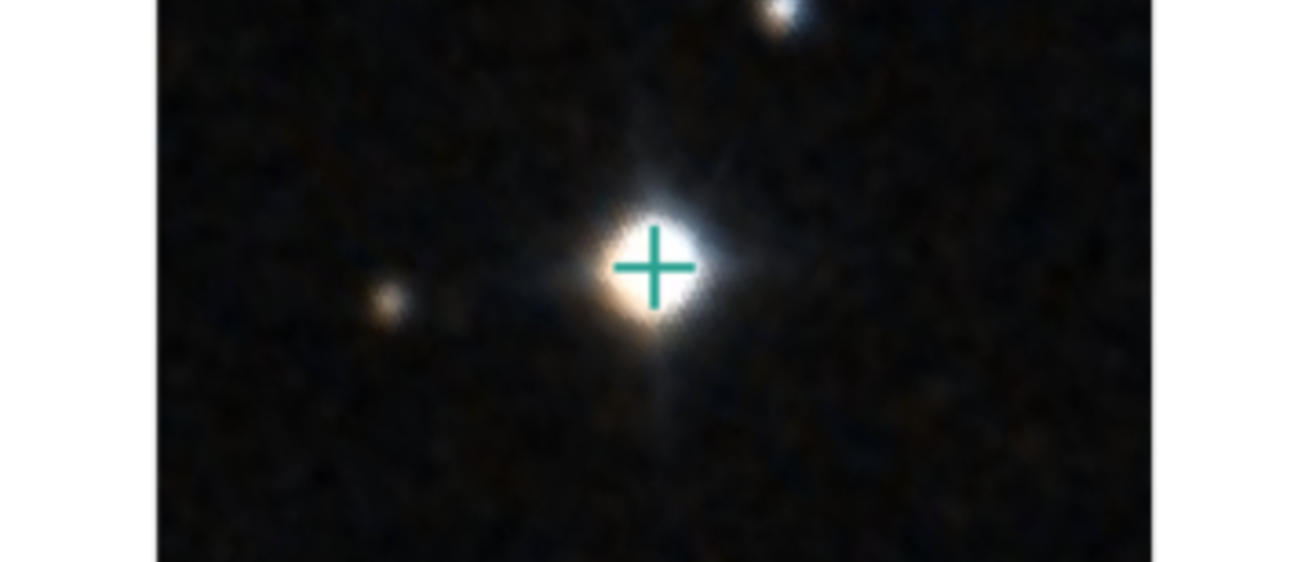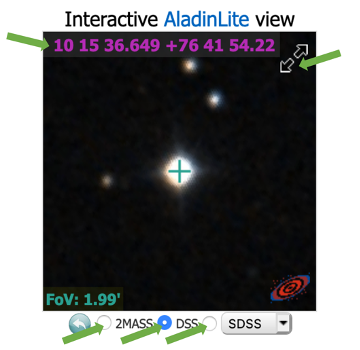
Breadcrumb
- Home
- Labs
- Advanced Labs
- SIMBAD Astronomical Database
SIMBAD Astronomical Database
Main navigation
Resources: Worksheet, Worksheet (text document), SIMBAD
Many astronomical observations are made as a survey. In a survey, a specific telescope or instrument installed on a telescope is used to observe the whole sky visible to the telescope. The results are then archived and made available for other astronomers, professional and amateur, to use. In a sense, the famous Messier catalog of objects (M42, M31, etc.) was a survey of the sky for non-stellar objects visible in relatively small telescopes.
Astronomical surveys have enormously expanded in the last few decades, as data can be archived in digital image form. Much astronomical research consists of analysis and interpretation of these “pre-recorded” data. As a prominent example, the Vera Rubin Telescope, which is the principal new ground-based telescope for this decade, will be entirely a survey instrument. Before being named for Vera Rubin, it was called the Large Synoptic Survey Telescope, or LSST. Research with the Vera Rubin Telescope will consist exclusively of “data mining” via use of programs to access, calibrate, and analyze the data it takes in an automatic mode.
The present lab exercise uses another resource of this sort, the SIMBAD database. SIMBAD is an acronym for Set of Identifications, Measurements, and Bibliography for Astronomical Data. SIMBAD resides on a server in Strasburg, France, and is essentially a huge online reference book for astronomical objects.
What is SIMBAD?
As mentioned above, SIMBAD can be thought of as a large disk storage system with the programs to access the data on those disks. It contains information on a huge number of astronomical objects which have been observed. The given information may consist of the celestial coordinates (right ascention, declination) of the objects to the highest available precision, different names for the object that have arisen in different catalogs, and additional measurements such as apparent magnitudes of the object (brightnesses measured when the light of the astronomical object passes through particular filters placed on the telescope), the parallax of the object (artificial observed movement relative to background stars due to the Earth's orbit around the Sun that is useful in determining distance to an astronomical object), and the redshift of the object (a measurement of how fast a distant object is moving away due to the expansion of space), if those values are known. SIMBAD also contains references to the astronomical literature, where one can read how the original measurements were made. SIMBAD is used by professional astronomers on a daily basis in their research work, and is heavily used by experienced amateur astronomers in planning and analyzing their observations.
Another very useful feature of SIMBAD, which will constitute a main activity in this exercise, is that it displays images of the object made by surveys with research-grade telescopes. Three of these surveys are briefly described below.
DSS - Digital Sky Survey: The entire northern hemisphere sky was imaged by a specialized telescope at Palomar Observatory in southern California twice, once in the early 1950s and again in the 1980s. The first survey provided the data used by George Abell in his famous catalog of clusters of galaxies. The images were made through both red and blue filters, and were taken on photographic plates (ask your grandpa or grandma what those were). In the 1990s, these plates were scanned and saved in the form of computer-readable image files.
SDSS - Sloan Digital Sky Survey: The Sloan Digital Sky Survey (SDSS) is one of the most important recent research surveys. It was carried out with a specialized telescope at an excellent site in southern New Mexico, and at a number of visual wavelengths. The SDSS was funded by donations from a number of universities and institutes, and the data are partially proprietary. However, some of the images are in the public domain and appear in SIMBAD if the object of interest is in one of those images.
2MASS - Two Micron All-Sky Survey: The Two Micron All-Sky Survey (2MASS) was carried out in the mid-infrared, at a wavelength of 2 microns, thus the name of the survey. 2MASS images exist for most of the fields of the DSS, and often are useful because they provide an infrared image counterpart to the DSS visual wavelength images.
In carrying out these investigations, students are urged to examine their object of choice in all three of the surveys above, if images are available in all three of the surveys. If the SDSS image is available, that is the highest quality one to use. The DSS image will always be available, but often parts of some objects (planetary nebulae, for example) are saturated. In that case, looking at the 2MASS image will be helpful.

Learning Goals: The goal of this lab is for students to select a class of object they find particularly interesting and, using SIMBAD, explore and sift through information on their object in the database, perform basic operations with this data, and view research-quality images of their target.